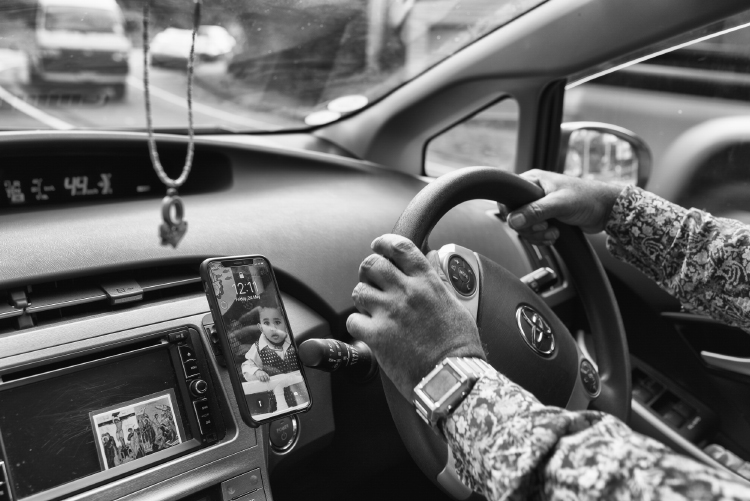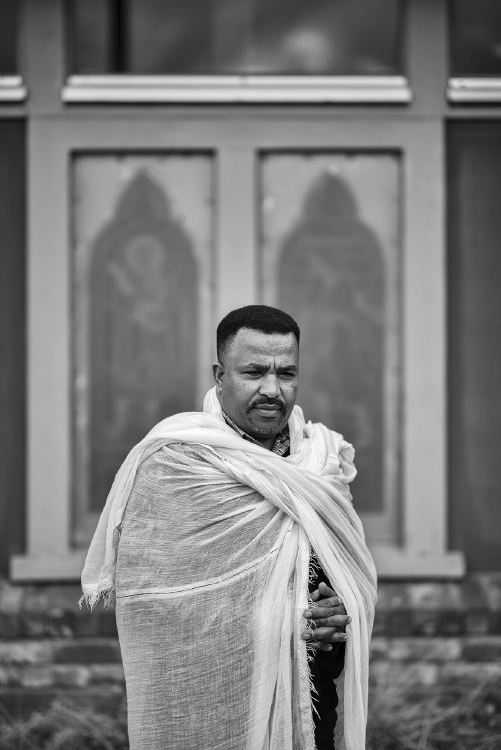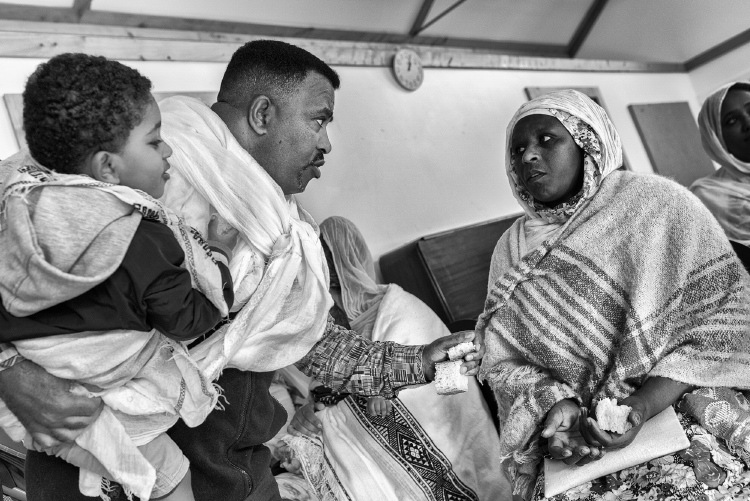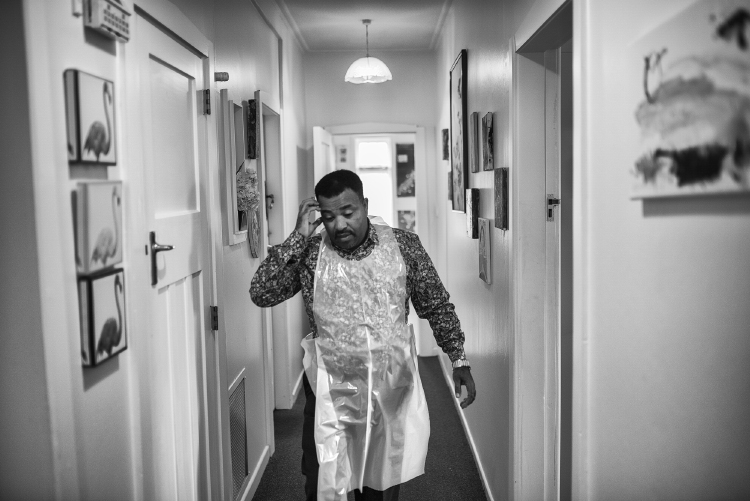Hope & A Living Wage
Ehsan Hazaveh’s My Life To Live
NINA SEJA

EHSAN HAZAVEH ‘After a long shift, I can’t wait to see my son.’ 2019 Black-and-white photograph
There are many layers that make up someone’s totality: DNA; the cumulative experiences over a lifetime, shaped by both internal and external realities and imaginings; the structures and limitations in which we find ourselves, and are difficult to break out of. Ehsan Hazaveh’s My Life To Live documents these layers through the upheaval and respite of refugee background workers’ lives. Aspirational yet grounded in the everyday, the project considers the challenges of low-wage employment and the difference a living wage could make to those confronting many obstacles.
Independent Iranian photographer Hazaveh uses two different forms of narrative―the photographic and the written―to document the lives of six workers from refugee backgrounds: South Sudan, Myanmar, the Assyrian community in Iraq, Ethiopia, Eritrea, and Colombia. The photographs are accompanied by first-person reflections about the subjects’ experiences that led to their refugee status, and how much their lives were transformed after moving to New Zealand. These stories emerged from hours of interview footage, with historian Cybèle Locke conducting the interviews and novelist Elizabeth Knox crafting the texts.
The subjects are diverse, in terms of their experiences both back in their home countries and in New Zealand. There are mirrors and echoes though: of war, of displacement, of families split apart. And there is hope, too, with the relative stability that New Zealand offers, although one participant does recognise the growing cost of living here, and the precarity it means.
Policy and changes in the law can oft be considered dry, depersonalised. In My Life To Live, the positive impact that a living wage could have is woven into the texts and photographs. It has the potential to mean not just working fewer hours, but also being able to spend time with family, volunteering, and pursuing education. Four of the subjects are still in low-wage jobs, except for Nigussie Fenja and Suleman Salih.
Coming from Ethiopia as an asylum seeker, Fenja eventually moved from cleaning jobs to caregiving. He emphasises, ‘When I started as a care support it was a minimum wage job. You can’t even dream and it’s hard to survive.’ The exhaustion is palpable: a downward gaze in a hallway; a photograph of son Emmanuel on a cell phone is a reminder of the child at home. The toil means life is literally askew, as in one image, in which Fenja wipes a bathroom mirror.
Receiving a living wage meant he was able to be more involved with his family and as a leader in the Ethiopian community. The intimacies of family and community life can be seen in the photographs. Time with a child means exuberance. Time with church members means working through problems together.
A life of displacement and disruption leaves its imprint, though. A window separates Fenja from youths playing soccer, his hands splayed on the glass. In a photograph with his son, the caption reads: ‘From now on I live for him. Please God, don’t take him away from me.’ Life can be temperamental. A living wage can provide a level of surety with these stressors. It provides hope―a balm against the past.

EHSAN HAZAVEH ‘I connect with people by doing good things.’ 2019 Black-and-white photograph

EHSAN HAZAVEH 'I like supporting people, but cleaning is not my cup of tea.’ 2019 Black-and-white photograph

EHSAN HAZAVEH ‘People share their hardship and issues at church and we help each other solve our problems.’ 2019 Black-and-white photograph

EHSAN HAZAVEH ‘Caregiving can get too hard at times.’ 2019 Black-and-white photograph

EHSAN HAZAVEH ‘I’m the coach, but wish I was young enough for someone to coach me. It’s too late now!’ 2019 Black-and-white photograph

EHSAN HAZAVEH ‘From now on I live for him. Please God, don’t take him away from me.’ 2019 Black-and-white photograph
